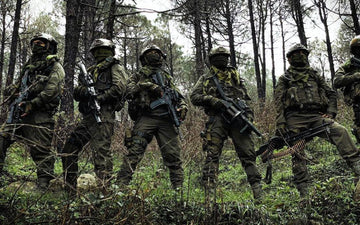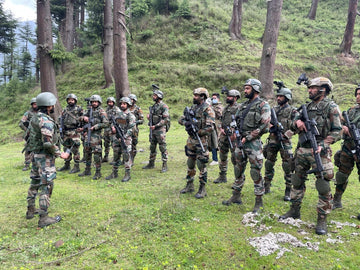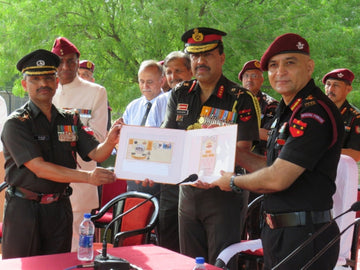The decision to permit women to join the Marine Commandos (MARCOS), the elite special forces unit of the Indian Navy, represents a landmark moment in the progressive transformation of the Indian military. Traditionally, special forces have been perceived as domains solely for men, built on narratives of extreme physicality, combat readiness, and tactical prowess. However, recent reforms embracing inclusivity demonstrate a commitment to empowering women within the ranks of the armed forces—an essential evolution in a country where more women are taking roles that extend beyond traditional boundaries. The implications of this shift are profound, not just for gender equality in the military but also for the operational capabilities of the Indian Navy.
Historical Context
MARCOS, established in 1987, has been instrumental in numerous high-profile operations, showcasing exemplary skills in counter-terrorism, hostage rescue, and maritime operations. However, for decades, the grueling nature of its training and stringent selection processes have limited the unit to male candidates only. This male-centric approach formed barriers not only for women aspiring to serve in such critical roles but also reinforced gender stereotypes within the military profession.
However, the winds of change have begun to sweep through the structure of the Indian armed forces. Traditionally, women have had limited opportunities in combat roles, primarily confined to auxiliary and administrative positions. The 2020 announcement regarding women’s entry into combat roles on a permanent basis marked an essential turning point. With the introduction of the Agnipath scheme in 2022, the doors were opened wider. Under this framework, women can now enlist in a more expansive capacity, allowing them to aspire toward specialized roles like those in MARCOS.
Eligibility and Enrollment
The revised eligibility parameters for joining MARCOS are framed within the broader context of India's Agnipath scheme, which seeks to attract youth into military service by offering four-year enlistments with an opportunity for further career paths. Here’s a detailed look at the eligibility requirements and the process:
1. Enlistment as Agniveers
- Women interested in joining MARCOS must initially enlist as Agniveers. This program is aimed at fostering a younger demographic within India’s military forces, addressing traditional recruitment shortfalls, and ensuring adaptability.
- Agniveers undergo a foundational training period, designed to imbue essential military skills and ethos.
2. Voluntary Commitment to MARCOS
- After successful completion of their initial military training, women can choose to volunteer for MARCOS training. This voluntary commitment marks a significant shift from prior policies, emphasizing personal choice in pursuit of rigorous military excellence.
3. General Entry Standards
- Those aspiring to be part of MARCOS must meet stringent entry requirements. These include assessments of:
- Physical Fitness: Candidates must demonstrate superior physical endurance, strength, and agility.
- Medical Standards: Candidates need to pass rigorous medical examinations to ensure they are fit for the demanding nature of special forces operations.
- Educational Qualifications: A basic educational background is also required, though specific criteria can vary.
Training and Selection
Training for MARCOS is a defining experience, characterized by its intensity and stringent selection processes. This phase is both a physical and psychological crucible for candidates, aiming to filter through the able to identify the exceptional.
1. The Selection Process
- The selection process for MARCOS is notoriously unforgiving, with a dropout rate exceeding 80%. This ensures only those who exhibit exceptional resilience and fortitude remain.
- Training includes a series of exceptionally challenging components:
- Basic Special Forces Training: A foundational component that encompasses a variety of combat and operational techniques.
- Parachute Courses: Candidates learn airborne techniques essential for rapid deployment across diverse terrains.
- Combat Diver’s Courses: Here, candidates receive underwater training, critical for naval special operations.
- Advanced Techniques: This includes clandestine operations and advanced fieldcraft, honing tactical skills in real-world scenarios.
2. Culmination of Training
- Training culminates in assessments that place candidates in simulated high-stakes environments, where decision-making and operational skills are rigorously tested.
Real-World Applications and Case Studies
The integration of women into MARCOS reflects broader global trends of feminist evolution in military contexts. Several progressive military organizations worldwide—such as the United States Navy SEALs and the British SAS—have already seen the successful incorporation of women into elite combat roles.
In India, while there are yet to be prominent public examples of female MARCOS operatives, the potential impact of such changes can be inferred from ongoing international parallel cases. Women participating in special operations in other nations have taken on pivotal roles in counter-terrorism operations, intelligence gathering, and community engagement, reinforcing operational effectiveness through diversity of thought and experience.
Statistical Data and Research Insights
The reform regarding women’s participation in MARCOS is corroborated by broader statistics that reveal changing public sentiment towards women in military roles:
- According to recent surveys, more than 60% of the Indian populace supports increased roles for women in the armed forces, indicating shifting attitudes towards gender roles in the military.
- Research has consistently shown that diverse teams outperform homogeneous groups in high-stress environments such as military operations, demonstrating the potential benefit of integrating women into special forces.
Comparative Analysis
While MARCOS is breaking new ground, it is vital to recognize that integrating women into elite military units presents unique challenges and opportunities. Comparatively, nations like Israel and Norway have long allowed women in combat roles and have reported positive impacts on military efficiency and morale. Lessons from these countries provide insights into effectively managing the integration process, emphasizing mentorship programs, physical conditioning, and cultural adaptation.
Challenges and Solutions
Despite the progressive steps taken, challenges remain:
1. Physical Standards:
- Maintaining rigorous physical standards presents a challenge when integrating women into MARCOS. However, implementing tailored training programs that focus on physical conditioning specific to women could create a level playing field.
2. Cultural Resistance:
- There may be cultural resistance within military ranks against women joining elite units. Incorporating awareness programs that highlight the value of diversity and successful role models can alleviate some of these tensions.
3. Support Systems:
- Establishing robust support systems, including mentorship from existing male and female leaders within the forces, will be crucial in fostering an inclusive atmosphere.
Future Trends and Predictions
Looking ahead, the inclusion of women in MARCOS presents possibilities for a transformative shift in military culture within India. As more women successfully integrate into combat roles, expectations of female service members will inevitably evolve, paving the way for future generations.
The long-term predictions include:
- Enhanced Operational Capacity: Greater diversity in special forces can lead to improved decision-making and creativity in problem-solving, addressing complex threats more effectively.
- Cultural Change: The presence of women in frontline military combat can catalyze broader societal acceptance of women in diverse roles beyond traditional norms, affecting public policy and female representation in STEM fields and leadership roles.
Conclusion
In conclusion, allowing women to join the elite MARCOS unit of the Indian Navy is a progressive step toward military inclusivity and equality. By enlisting as Agniveers and subsequently volunteering for MARCOS training, women are setting the stage for a remarkable transformation in the narrative surrounding women in combat. The road ahead will not be without challenges, but with the right support mechanisms, training programs, and cultural shifts in mindset, the integration of women in MARCOS stands poised to enrich the operational dynamics of the Indian military.
As we reflect on this significant development, it is imperative that the message remains clear: the ability to serve in elite units should not be constrained by gender. Instead, it should be dictated by a commitment to excellence, resilience, and the unyielding spirit of service. Future leaders and policy-makers must continue to advocate for opportunities that harness the untapped potential of women, fostering a military that is not only diverse but also operationally superior—championing excellence regardless of gender.





